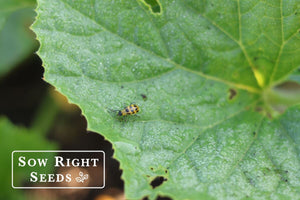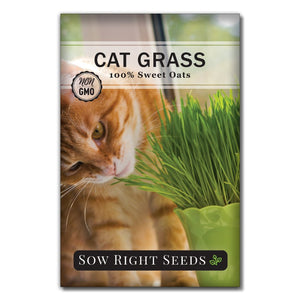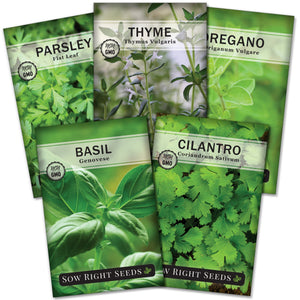Indoor Gardening Made Simple: Easy Tips to Get You Growing
Indoor gardeningGardening isn’t only for people who have a great big yard or fabulous weather. Indoor gardening makes harvesting healthy herbs and vegetables possible, even in the middle of winter! You don’t have to invest in a complicated hydroponics kit or build a greenhouse to get started gardening indoors. With just a few considerations, you’ll be growing in no time! Follow these helpful tips to start your indoor vegetable garden.

How to Start Your Indoor Vegetable Garden
An indoor garden can be as small or as large as you want. From one little pot of basil on the windowsill to a mix of containers and grow lights, there's a way to make indoor gardening work for you.
Lighting for Indoor Gardens
Light is the most important consideration for all gardens, especially indoors. While some homes are lucky enough to have sunrooms or greenhouses, a south-facing window can also provide a good starting point for natural light. However, indoor gardeners often need to supplement natural light, especially during shorter winter days.
How Much Light Do Plants Need?
Most plants need a minimum of 6–8 hours of light daily to thrive. Herbs, leafy greens, and some vegetables can tolerate slightly less, but fruiting plants like tomatoes and peppers require longer exposure. During the winter months, when natural light is limited, grow lights become an essential tool to ensure your plants get enough light.
Choosing the Right Grow Light
To mimic natural sunlight effectively, choose a full-spectrum grow light. These lights provide the entire spectrum of visible light, which plants need for photosynthesis. Look for grow lights labeled as "full-spectrum" and with a color temperature between 5,000 and 6,500 Kelvin, which closely mimics daylight.
Setting Up Your Lights
Position your grow lights 6–12 inches above your plants, depending on the light intensity and plant type. Adjustable setups allow you to raise the light as your plants grow.
Avoiding Leggy Growth
Plants naturally stretch toward the strongest light source. If your plants are becoming leggy (tall and weak with sparse leaves), it’s a sign they aren’t getting enough light. Rotate your plants regularly and ensure even light distribution by using multiple lights.
Additional Tips for Success
- Timers: Use timers to automate the light cycle. Most plants benefit from 12–16 hours of light per day.
- Heat Management: Some grow lights, especially older models, generate heat. Ensure proper ventilation to avoid overheating your plants. LED grow lights are energy-efficient and emit minimal heat, making them a great option.
Indoor Temperature & Humidity
Temperature and humidity are also important for growing healthy indoor plants. The same range most people find comfortable— 65°–75°F —is suitable for many indoor plants. Sudden temperature fluctuations, however, can stress plants, so it’s best to keep them away from drafts, heating vents, or cold windows.
Understanding Humidity Needs
The ideal humidity range for most indoor plants is 40–60%. Many homes, especially during winter, can become too dry due to heating systems.
How to Increase Humidity
- Humidifiers: Setting up a humidifier near your plants is the most effective way to maintain consistent humidity.
- Grouping Plants: Plants naturally release moisture into the air, so clustering them together can create a microclimate with higher humidity.
- Water Trays: Place a shallow tray filled with water and pebbles near your plants. As the water evaporates, it increases the surrounding humidity. Ensure the pots are not sitting directly in the water to avoid root rot.
- Misting: Lightly misting plants can temporarily boost humidity, but it’s not a long-term solution. Avoid over-misting, as excess water on leaves can encourage fungal issues.

Growing Medium
A loose, well-draining potting mix works very well for indoor growing. Fresh potting soil ensures you don’t bring in any pathogens or diseases from outside, and it also won’t compact the way garden soil will.
There are commercially available mixes specifically for vegetables that will work for growing herbs, lettuce, and leafy greens.
Containers for Indoor Gardening
An indoor garden is also a container garden. There are many containers to choose from. Here are some key considerations to help you select the right container for you.
Drainage is Essential - Always choose containers with drainage holes to prevent water from pooling at the bottom, which can lead to root rot. If you find decorative pots without drainage, you can use them as outer covers (cachepots) for functional containers inside. Place trays or saucers under containers to catch excess water and protect your surfaces from damage.
Material Matters - Pots and plant containers are made from all kinds of materials. Plastic pots are lightweight and retain moisture well. They’re ideal for plants that require consistent watering, like herbs and leafy greens. Porous pots made from clay allow for better air circulation to the roots but dry out faster, making them a good choice for plants like succulents that prefer drier conditions. Fabric grow bags are another option. Make sure you place them on a waterproof tray to avoid any damage to your flooring from leaks.
Container Size - Match the container size to the plant's growth habit. Herbs like basil or parsley and greens like lettuce need containers at least 6–8 inches deep, while smaller herbs like thyme or chives can thrive in shallower pots. You may also want to consider where the pot will be and decide if it needs to be a certain shape or size. Also, consider vertical gardens, hanging pots, or stackable systems for smaller spaces.
Be creative and use what works for the plants in your indoor garden space.
Indoor Watering
Watering is one of the most critical aspects of indoor gardening, and getting it right can mean the difference between thriving plants and struggling ones.
It is usually more common to overwater than to underwater indoor plants. So always check first to see if your plants need water.
Use room temperature water to avoid shocking the plants. Water the base of the plant and avoid getting water on the leaves, which could encourage fungus growth.
Bottom watering is also an efficient way to water indoor plants. When using this method, don't leave water standing in the saucer for more than a few hours. The soil will soak up what it needs in that amount of time, and anything left will be excess.
Fertilizing Indoor Plants
Fertilizer is needed to replenish nutrients that are used up or washed away. You can use liquid or granular fertilizers on indoor plants.
Liquid fertilizers are easy to use and quickly absorbed by plants. They require dilution, which is a good option for regular feeding.
Granular fertilizers are slow-release and provide nutrients over time as they dissolve.
Choose a fertilizer based on your plant’s needs. Avoid over-fertilizing herbs, as this can reduce their flavor.
Plants That Do Well Indoors
An herb garden is one of the most common indoor gardens.
It’s nice to grow herbs indoors so they're within easy reach whenever you need a touch of fresh flavor.
These are some herb varieties that can grow well indoors.
Growing vegetables indoors is also an option.
Look for dwarf varieties and green leafies that don’t take up as much space. These plants don’t need as much intense sun as fruiting vegetables.
If you still aren’t sure where you want to start, we’ve got one last suggestion for you: grow your own microgreens! They’re beginner-friendly and don’t require much time commitment or space. Plus, kids love to watch them grow!
Indoor gardening can start with just one pot of your favorite herb. Then, add to it as you learn the basics. With the right light setup, containers, and plants, you can grow vibrant, healthy vegetables and herbs year-round.













Leave a comment